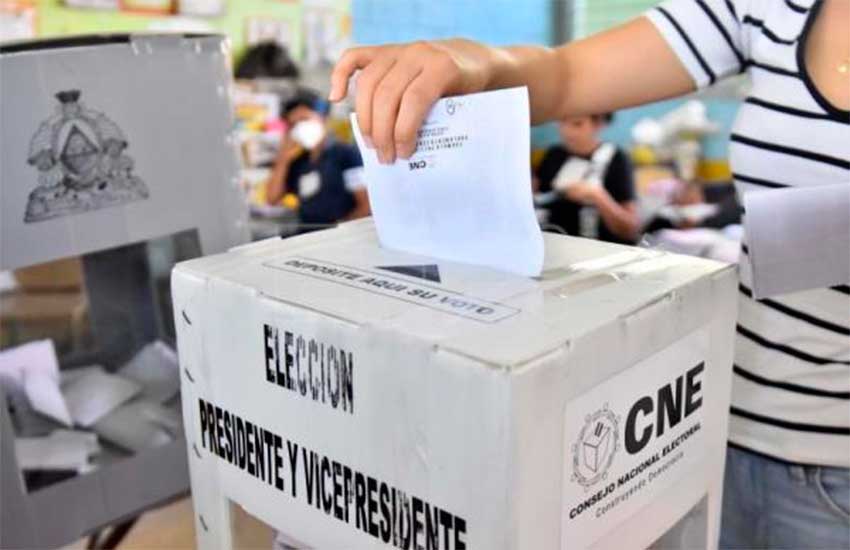Stolen Dreams: Holding Perpetrators Accountable In The Restaurant Industry

Table of Contents
Types of Theft in Restaurants: Identifying the Threats
Understanding the diverse forms theft can take is the first step towards effective prevention and prosecution. Here are some common threats facing restaurants:
-
Employee Theft: This is unfortunately pervasive. It includes:
- Cash theft: Employees pocketing cash from sales, tips, or the register. Statistics show this accounts for a significant portion of restaurant losses.
- Inventory shrinkage: The unexplained disappearance of food and beverages, often through pilferage or waste. Implementing robust inventory management systems is crucial here.
- Time theft: Employees clocking in early, leaving late, or extending breaks without authorization. This can be addressed with stricter timekeeping policies and monitoring.
-
Customer Theft: While less common than employee theft, customer theft can still significantly impact a restaurant's bottom line. This includes:
- Dine-and-dash incidents: Customers leaving without paying their bill. Strategies such as requiring credit card pre-authorization or increased staff vigilance can help mitigate this.
- Theft of property: Customers stealing silverware, glassware, or other items. Clear signage and attentive staff can deter this.
-
Vendor Fraud: Dishonest vendors can inflate prices, deliver substandard goods, or provide inaccurate invoices. Building strong relationships with reliable vendors and carefully reviewing invoices are key preventative measures.
-
External Theft: This encompasses external threats like:
- Burglary: Forced entry and theft of cash, equipment, or inventory. Robust security systems, including alarm systems and strong locks, are essential.
- Vandalism: Damage to property resulting in repair costs and potential business interruption. Security cameras can help identify culprits and provide evidence.
Implementing Preventative Measures: Building a Secure Environment
Proactive measures are far more effective than reactive responses. Here’s how to create a secure environment:
-
Strengthened Inventory Management: Implement a detailed inventory system with regular stock checks, using inventory management software to track purchases, usage, and waste. Assign clear responsibilities for inventory control to specific employees.
-
Enhanced Security Systems:
- CCTV cameras: Strategically placed cameras act as a strong deterrent and provide crucial evidence in case of theft.
- Alarm systems: These systems offer immediate notification of break-ins, allowing for a quick response from authorities.
- Security personnel: Hiring security guards, especially during late-night hours or in high-risk areas, can significantly reduce the risk of theft.
-
Improved Employee Training and Background Checks:
- Thorough background checks: Conducting comprehensive background checks on all employees is essential to mitigate the risk of hiring dishonest individuals.
- Theft prevention training: Regular training sessions emphasizing the importance of honesty and outlining procedures for reporting suspicious activity will reinforce a culture of integrity.
-
Stricter Cash Handling Procedures:
- Two-person handling: Requiring two employees to handle cash transactions reduces the opportunity for theft.
- Secure cash registers: Using cash registers with security features, such as tamper-evident seals and drop safes, prevents unauthorized access.
- Regular audits: Conducting regular cash counts and audits ensures accuracy and identifies discrepancies.
Pursuing Legal Action and Holding Perpetrators Accountable:
If theft occurs, decisive action is critical:
-
Gathering Evidence: Meticulously document everything. This includes:
- Surveillance footage: High-quality video evidence is invaluable.
- Transaction records: Maintain accurate records of all transactions.
- Witness statements: Gather statements from employees or customers who witnessed the incident.
-
Legal Processes:
- Reporting to authorities: File a police report immediately to initiate a criminal investigation.
- Filing insurance claims: If you have appropriate insurance coverage, file a claim promptly.
- Initiating civil lawsuits: If necessary, pursue civil action to recover losses.
-
Working with Law Enforcement: Cooperate fully with law enforcement to ensure a thorough investigation and prosecution of the offender.
-
Civil vs. Criminal Penalties: Understand the differences between civil and criminal penalties. Criminal charges can lead to jail time and fines, while civil lawsuits aim to recover financial losses.
The Emotional Toll and Support Systems for Victims
The impact of theft extends beyond financial losses. It creates stress, anxiety, and feelings of violation. Restaurant owners and employees often experience significant emotional distress. Seek support from:
- Small business associations: Many associations offer advice and resources for dealing with business crime.
- Counseling services: Professional counseling can help individuals cope with the emotional aftermath of theft.
Conclusion: Protecting Your Restaurant and Reclaiming Your Dreams
Protecting your restaurant from theft requires a multi-faceted approach. By implementing preventative measures, rigorously investigating incidents, and pursuing legal action when necessary, you can significantly reduce your risk and hold perpetrators accountable. Don't let theft steal your dreams; take proactive steps to safeguard your business and ensure its continued success. Prioritize accountability in the restaurant industry—protect your investment and reclaim your hard-earned success. Implement the strategies discussed to foster a secure environment, deter theft, and protect your restaurant from future losses. Take control and secure your future.

Featured Posts
-
 Children Rescued In Dalfsen Amber Alert Parents Apprehended
May 19, 2025
Children Rescued In Dalfsen Amber Alert Parents Apprehended
May 19, 2025 -
 Abba Voyage Setlist Changes And Band Statement
May 19, 2025
Abba Voyage Setlist Changes And Band Statement
May 19, 2025 -
 Aspirantes A Diputados Del Movimiento Rescate Y Transformacion En Cortes Conoce A Los Candidatos
May 19, 2025
Aspirantes A Diputados Del Movimiento Rescate Y Transformacion En Cortes Conoce A Los Candidatos
May 19, 2025 -
 Solving Todays Nyt Mini Crossword The Marvel Avengers Clue
May 19, 2025
Solving Todays Nyt Mini Crossword The Marvel Avengers Clue
May 19, 2025 -
 Elecciones Primarias Cne 2025 Lo Que Necesitas Saber
May 19, 2025
Elecciones Primarias Cne 2025 Lo Que Necesitas Saber
May 19, 2025
Latest Posts
-
 L Tzoymis Kai I Enallaktiki Toy Gia To Kypriako O Dromos Toy Kateynasmoy
May 19, 2025
L Tzoymis Kai I Enallaktiki Toy Gia To Kypriako O Dromos Toy Kateynasmoy
May 19, 2025 -
 To Kypriako Zitima Kateynasmos I Antiparathesi I T Hesi Toy L Tzoymi
May 19, 2025
To Kypriako Zitima Kateynasmos I Antiparathesi I T Hesi Toy L Tzoymi
May 19, 2025 -
 Times Kaysimon Kypros Enimeromenos Odigos
May 19, 2025
Times Kaysimon Kypros Enimeromenos Odigos
May 19, 2025 -
 Kypriako I Simasia Toy Kateynasmoy Enanti Tis Antithesis
May 19, 2025
Kypriako I Simasia Toy Kateynasmoy Enanti Tis Antithesis
May 19, 2025 -
 Anazitisi Gia Fthina Kaysima I Kypros Se Arithmoys
May 19, 2025
Anazitisi Gia Fthina Kaysima I Kypros Se Arithmoys
May 19, 2025
